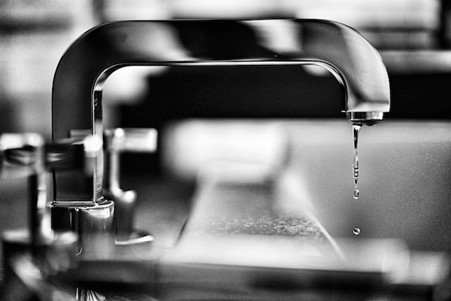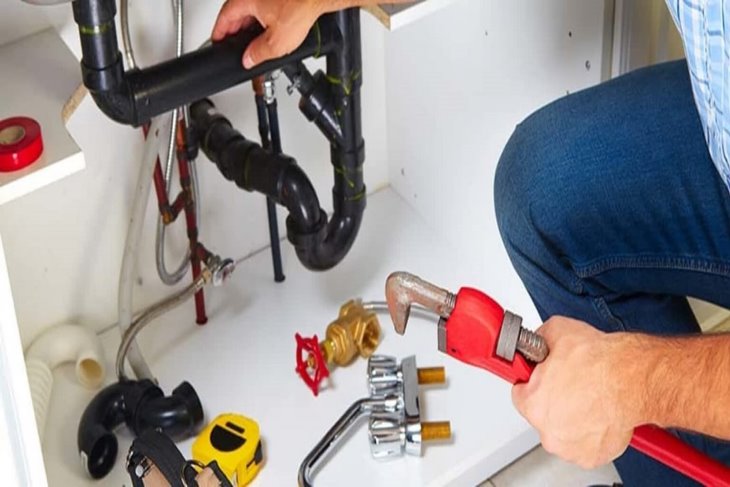Managing Plumbing Problems in Older Homes: Important Guidance
Managing Plumbing Problems in Older Homes: Important Guidance
Blog Article
What're your thoughts with regards to Common Plumbing Problems in Older Homes?

Older homes often feature charm, personality, and history, yet they can additionally bring a host of plumbing concerns. Whether you're handling maturing pipes, low tide stress, or leaks, knowing exactly how to address these typical problems is important to maintaining a risk-free and functional home. In this overview, we'll discover the common pipes challenges dealt with by older homes and give useful solutions to maintain your pipes in leading form.
Recognizing Common Pipes Issues
Aging Pipelines
Among the most typical concerns in older homes is aging pipes. Depending upon the era in which your home was developed, the pipelines might be made from materials that have actually worn away in time, such as galvanized steel, cast iron, or perhaps lead. These materials can rust, end up being weak, or develop leaks, causing water damages and potential health hazards.
Water Top Quality Screening
Older pipes can affect the high quality of your water. Conduct a water high quality test to check for pollutants such as lead, corrosion, or various other contaminations that might be introduced by aging pipelines.
Solutions for Typical Pipes Concerns
Changing Aging Pipes
If your home has old, deteriorating pipes, think about replacing them with modern-day materials like copper or PEX. This can be a considerable financial investment, however it will certainly protect against future issues and improve the security and reliability of your plumbing system.
Taking Care Of Low Tide Stress
To deal with low water pressure, begin by cleansing or changing old components and getting rid of mineral build-up in the pipelines. If the problem continues, it may be needed to change areas of rusty pipes.
Repairing and Changing Dripping Pipelines
For tiny leakages, you can make use of pipeline clamps or epoxy putty as a short-lived fix. However, it's best to replace leaking pipelines totally to stay clear of more damage.
Upgrading Components
Updating old components to modern-day, water-efficient designs can improve your home's plumbing performance and lower water intake. Try to find fixtures with the WaterSense label for the best performance.
Handling Pipe Corrosion
If your pipelines are worn away, replacing them with corrosion-resistant materials like copper, PVC, or PEX is the best remedy. Regular evaluations and water quality upkeep can assist prevent further deterioration.
Low Tide Stress
If you're experiencing low water pressure, maybe as a result of natural resources, rust inside the pipes, or old fixtures that are no more working effectively. This can be a major aggravation, particularly in areas like showers and sinks.
Leaking Pipes
Leakages are one more frequent concern in older homes, commonly triggered by corroded or damaged pipelines. Even tiny leaks can lead to substantial water damage, mold and mildew development, and enhanced water costs if not addressed without delay.
Out-of-date Components
Obsolete pipes fixtures such as taps, bathrooms, and showerheads not just look old however might also be less reliable, susceptible to leakages, or inappropriate with contemporary pipes standards.
Pipeline Corrosion
Rust is a common issue in older pipes, especially those made from galvanized steel or cast iron. Rusty pipes can limit water flow, trigger staining, and ultimately bring about leakages or pipe bursts.
Analyzing the Condition of Your Pipes
Inspecting Noticeable Pipes
Begin by inspecting any type of noticeable pipelines in your home, such as those in basements, crawl spaces, or under sinks. Seek indications of deterioration, leakages, or rust, which can suggest underlying concerns.
Looking for Leaks
Check for leakages by inspecting areas around taps, commodes, and under sinks. You can also monitor your water meter before and after a duration of no water use to discover surprise leakages.
When to Call a Professional
While some plumbing problems can be managed with do it yourself services, there are times when it's finest to employ a specialist. If you're dealing with major leaks, substantial corrosion, or are uncertain regarding the condition of your pipelines, an accredited plumber can provide professional evaluation and repair service.
Preventive Maintenance Tips
Routine Examinations
Frequently check your pipes system for indications of damage. Capturing concerns early can protect against pricey fixings down the line.
Water Stress Regulation
Ensure your water pressure is within the suggested range to avoid stressing your pipes and components. A plumber can install a pressure regulator if required.
Water Top Quality Upkeep
Set up water filters or softeners if your water quality is poor. This can protect your pipes and components from damage triggered by tough water or impurities.
Aggressive Pipeline Substitute
If your home has older pipelines, consider positive substitute before major concerns develop. This can conserve you from emergency repair work and water damage.
Conclusion
Handling plumbing issues in older homes calls for a mix of caution, precautionary maintenance, and prompt upgrades. By understanding the usual obstacles and understanding when to seek expert help, you can ensure your plumbing system remains useful and reliable for years ahead.
Common Plumbing Issues in Older Homes and How to Fix Them
Owning an older home in Australia comes with its unique charm and a set of challenges, especially when it comes to plumbing. The Sunshine Coast has many older properties that can harbour plumbing problems that aren t just inconvenient but potentially costly. Here s a look at some common plumbing issues in older homes and expert advice on how to handle them.
Outdated Piping Materials
Many older homes were built with galvanised steel, cast iron, or even lead pipes, materials that are far from ideal by today s standards. Galvanised pipes are prone to corrosion and clogging, while lead pipes pose serious health risks.
How to Fix:
Replacing old pipes is a job for a professional. Upgrading to copper or PVC piping not only enhances water quality and flow but also increases the property s safety and value. If you suspect your home has outdated materials, a licensed plumber can conduct a thorough inspection and recommend the best course of action.
Corrosion and Pipe Degradation
Over time, exposure to water and minerals can cause pipes to corrode, leading to leaks, bursts, and water contamination. Corrosion is especially common in homes over 50 years old.
How to Fix:
Regular inspections can catch early signs of corrosion. If corrosion is found, the affected section of piping often needs to be replaced. For homes with extensive corrosion, a complete plumbing overhaul might be necessary. It s crucial to consult with a plumbing expert to understand the extent of the issue.
Tree Root Intrusion
Older neighbourhoods usually have mature trees whose roots can intrude into pipe lines, causing blockages or damage. This is particularly problematic for sewer lines, where roots seek out water sources.
How to Fix:
A plumber can use a specialised camera to inspect sewer lines for root intrusion. If roots are a problem, methods like root cutting or hydro-jetting can clear the obstruction. In severe cases, part of the pipe may need replacing. Consider root barriers around the piping to prevent future issues.
Inadequate Water Pressure
Low water pressure in older homes can be due to various factors, including corroded water lines, sediment build-up in pipes, or outdated fixtures.
How to Fix:
First, check if the low pressure is isolated to one area or throughout the house. Replacing old fixtures can sometimes resolve the issue. However, if the problem is more widespread, it might be due to sediment or corrosion. Flushing the system or replacing the affected pipes usually restores normal pressure. Again, a professional assessment is advisable.
Outdated Fixtures
Older homes often feature fixtures that are not only visually dated but functionally inefficient. This includes everything from toilets and taps to showerheads and washing machine hoses.
How to Fix:
Updating these fixtures can improve both water efficiency and the aesthetic appeal of your home. Modern fixtures are designed to conserve water, which can significantly reduce your water bill and lessen your environmental impact.
Conclusion
Maintaining the plumbing in an older home requires a proactive approach. Regular checks and updates are key to preserving these beautiful properties. If you re facing plumbing issues in your older home, it s best to call on experienced professionals like Green & Gold Plumbing & Gas. With the right expertise, even the most daunting plumbing problems can be resolved, ensuring that your home s character is maintained while its functionality is enhanced.
https://gandgplumbing.com.au/common-plumbing-issues-in-older-homes-and-how-to-fix-them/

As an avid reader about Main Plumbing Issues Found in Old Houses, I imagined sharing that chunk was worthwhile. Enjoyed reading our post? Please quickly share it. Help other people check it out. Thanks a bunch for your time. Please check our blog back soon.
Book Service Now Report this page